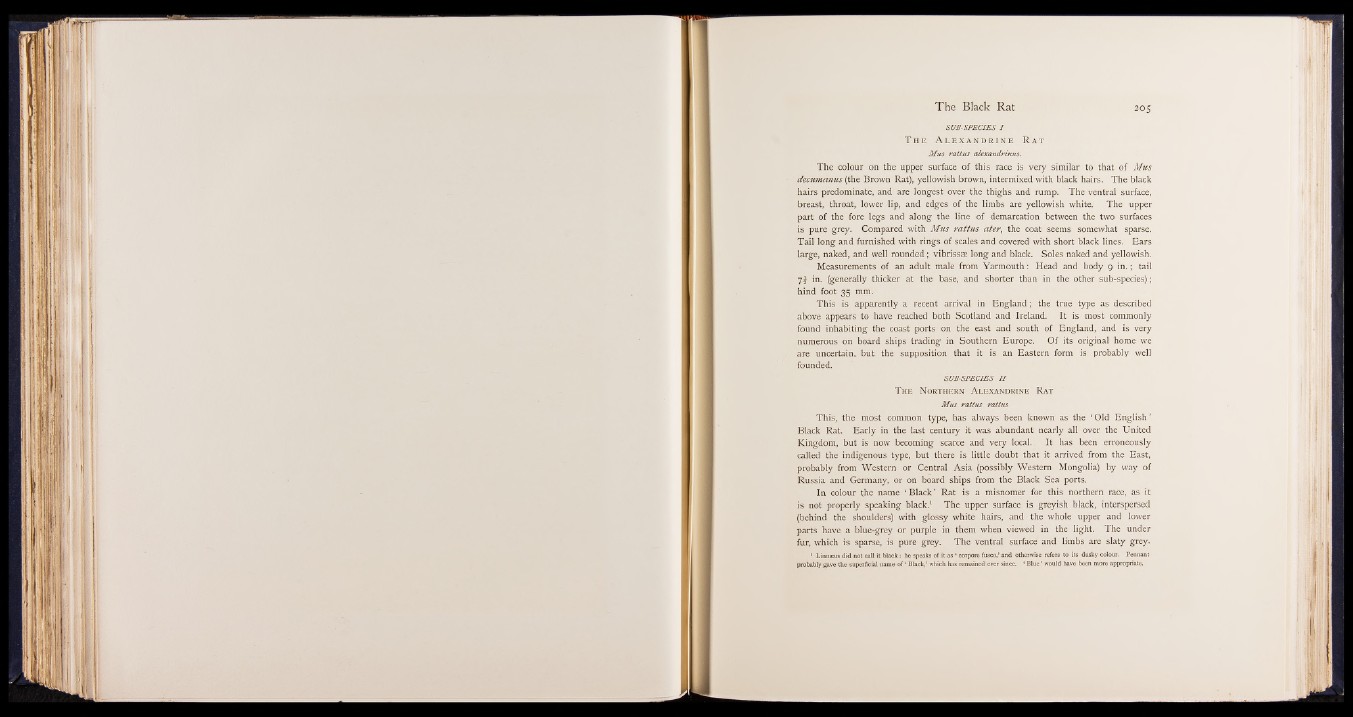
S U B -S P E C IE S 1
T h e A l e x a n d r i n e R a t
Mus rattus alexandrinus.
The colour on the upper surface of this race is very similar to that of Mus
decumanus (the Brown Rat), yellowish brown, intermixed with black hairs. The black
hairs predominate, and are longest over the thighs and rump. The ventral surface,
breast, throat, lower lip, and edges of the limbs are yellowish white. The upper
part of the fore legs and along the line of demarcation between the two surfaces
is pure grey. Compared with Mus rattus ater, the coat seems somewhat sparse.
Tail long and furnished with rings of scales and covered with short black lines. Ears
large, naked, and well rounded ; vibrissas long and black. Soles naked and yellowish.
Measurements of an adult male from Yarmouth: Head and body 9 in .; tail
in. (generally thicker at the base, and shorter than in the other sub-species);
hind foot 35 mm.
This is apparently a recent arrival in England; the true type as described
above appears to have reached both Scotland and Ireland. It is most commonly
found inhabiting the coast ports on the east and south of England, and is very
numerous on board ships trading in Southern Europe. Of its original home we
are uncertain, but the supposition that it is an Eastern form is probably well
founded.
SU B -S P E C IE S 1 1
T h e N o r t h e r n A l e x a n d r i n e R a t
Mus rattus rattus
This, the most common type, has always been known as the * Old English ’
Black Rat. Early in the last century it was abundant nearly all over the United
Kingdom, but is now becoming scarce and very local. It has been erroneously
called the indigenous type, but there is little doubt that it arrived from the East,
probably from Western or Central Asia (possibly Western Mongolia) by way of
Russia and Germany, or on board ships from the Black Sea ports.
In colour the name ‘ Black’ Rat is a misnomer for this northern race, as it
is not properly speaking black.1 The upper surface is greyish black, interspersed
(behind the shoulders) with glossy white hairs, and the whole upper and lower
parts have a blue-grey or purple in them when viewed in the light. The under
fur, which is sparse, is pure grey. The ventral surface and limbs are slaty grey.
1 Linnseus did not call it black: he speaks of it as ‘ corpore fusco,’ and otherwise refers to its dusky colour. Pennant
probably gave the superficial name of ‘ Black,’ which has remained ever since. 1 Blue ’ would have been more appropriate.